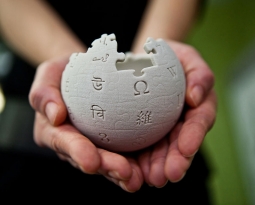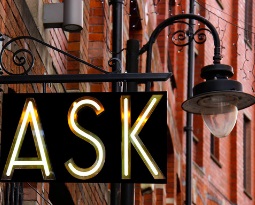WikiAlerts Glossary
What types of changes does WikiAlerts track?
WikiAlerts tracks many types of changes including:
- Template message changes –
Templates on Wikipedia are used to store data so that the same message can appear on multiple articles. Template messages often relate to what needs to be done to an article so that it fully meets Wikipedia’s editorial requirements , or if it doesn’t, warning that the article will soon be deleted. Since template messages can essentially be viewed as a warning by the editors, we believe these to be the most significant ’change’ and it will appear first in the subject line. Template messages can be added (#TemplateMessageAdded) or removed (#TemplateMessageRemoved)
Template messages appear in a box, usually with some sort of icon (like a broom for cleanup) and often with links for how to fix the problem.
Why should you care?
In the best case scenario, a template message is an indication that something needs to be fixed; in the worst case scenario it’s a warning that your article is up for deletion. Either way, it is not a good feature for the article status.
- Infobox changes
An infobox is a panel in the top right of an article, next to the lead section (in the desktop version of Wikipedia), or at the end of the lead section (in the mobile version) that summarizes key features of the page’s subject. Infoboxes may also include an image, a map, or both.
The Infobox changes can included the addition of an Infobox (#InfoboxAdded), the deletion of an Infobox (#Infoboxdeleted) and the most common, a change within the Infobox (#Infobox changed).
Why should you care?
The Infobox is generally what visitors to your page see first. If the content is wrong or will reflect poorly on your reputation, it is the first, and often only, impression visitors will receive.
- Feature article changes
Featured articles are considered to be the best articles Wikipedia has to offer, as determined by Wikipedia’s editors. They are used by editors as examples for writing other articles. Before being listed here, articles are reviewed as featured article candidates for accuracy, neutrality, completeness, and style according to the featured article criteria. There are 5,231 featured articles out of 5,551,685 articles on the English Wikipedia (~0.1% are featured). Thus, about one in 1,060 articles are listed here. Articles that no longer meet the criteria can be proposed for improvement or removal at featured article review.
On non-mobile versions of our website, a small bronze star icon () on the top right corner of an article’s page indicates that the article is featured.
An article can either be added to the featured list (#featurearticleadded) or removed from the list (#featurearticledeleted).
Why should you care?
When a featured article standard is removed, its usually a good idea to visit the article and try to revert the article back to the way it was when it was considered so good that it was ’featured’. A change in standard for article may also indicate that the article was vandalized or changed in a way that doesn’t represent your story.
- Good article notation changes
A good article (GA) is an article that meets a core set of editorial standards but is not featured article quality. Good articles pass through the good article nomination process successfully. They are well written, contain factually accurate and verifiable information, are broad in coverage, neutral in point of view, stable, and illustrated, where possible, by relevant images with suitable copyright licenses.
An article can either be added to the good article list (#GoodArticleAdded) or deleted from the list (#GoodArticleDeleted).
Why should you care?
As with the the featured article status, interested parties should visit the article and revert changes, if possible, so that the article is re-entred to the list. Deletion from the list could indicate vandalism or simply a bad editorial decision.
- Text changes
WikiAlerts will send notification whenever text has been changed, added or deleted.
Why should you care?
Sometimes text is changed in order to make the flow of the paragraph clearer or to correct an error. However, often, it is changed by a vandal intent on harming your reputation. In other cases, content you would rather not appear closer to the top (like lawsuits) are moved, to the detriment of your online reputation.
- Image changes
Images are sometimes added (#imageadded) or deleted (#imagedeleted), or an image might replace another image. In the case where an image is deleted, it is sometimes because of copyright issues. In those cases, the image is deleted from Wikipedia Commons as well, and we can’t access the image at all and won’t show it. In other cases, we will show both the image added and the image deleted.
Why should you care?
Occasionally, the image that is added is detrimental to your reputation, or your logo is changed and no longer represents your brand. We recommend checking the image to ensure that you feel comfortable with it in the article.
- Image Caption change
The caption under an image is sometimes changed (#ImageCaptionChanged).
Why should you care?
As with other changes, the changed caption might not reflect your best story.
- Portal notation changes
The idea of a portal is to help readers and/or editors navigate their way through Wikipedia topic areas through pages similar to the Main Page. In essence, portals are useful entry-points to Wikipedia content. An article is sometimes added to a portal. For example in the Birds Portal, The Albatrosses article was selected as the featured article. (#PortalAdded, #PortalDeleted)
Why should you care?
Portals are another way for an article to show its significance and to show that it fits within the wider scope of Wikipedia. Wikipedia wants things integrated; the more that your topic or article is integrated, the more validity you are showing that you belong up on Wikipedia. If you get a portal added to your page, it is certainly a good thing and getting one deleted would not be positive.
- Category changes
The central goal of the category system is to provide navigational links to Wikipedia pages in a hierarchy of categories which readers, knowing essential—defining—characteristics of a topic, can browse and quickly find sets of pages on topics that are defined by those characteristics. An article might be added or deleted from a category. (#CategoryAdded, #CategoryDeleted)
Why should you care?
The category the article is added to might be misaligned with your brand or story. Or the converse, the article might be deleted from a category you might want to be included in like: Fortune 500.
- Internal link changes
Internal links are links that connect to other articles within Wikipedia. An anchor text might be added or deleted, in which case the link from that anchor text might also be added or deleted. Alternatively, the link will just be deleted or added, or the link will be changed from one page to another. A link can appear multiple times within one article and the number of times the link appears can also change (#InternalLinkAdded, #InternalLinkDeleted, #InternalLinkIncreased, #InternalLinkDecreased).
Why should you care?
While links are not major aspects of the article, very occasionally a malicious editor might delete a link that is relevant to your story;conversely, they could add a link to an article with which you do not want your name to be associated.
- Reference changes
By citing sources for Wikipedia content, users verify that the given information is supported by reliable sources, thus improving the credibility of Wikipedia.
Why should you care?
There are cases where editors add references that do not present the brand or individual in the best way.



